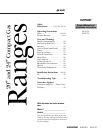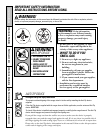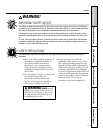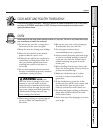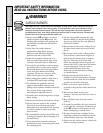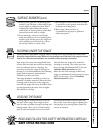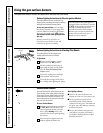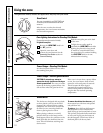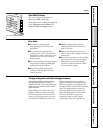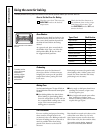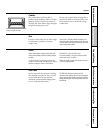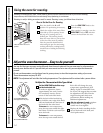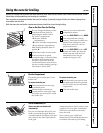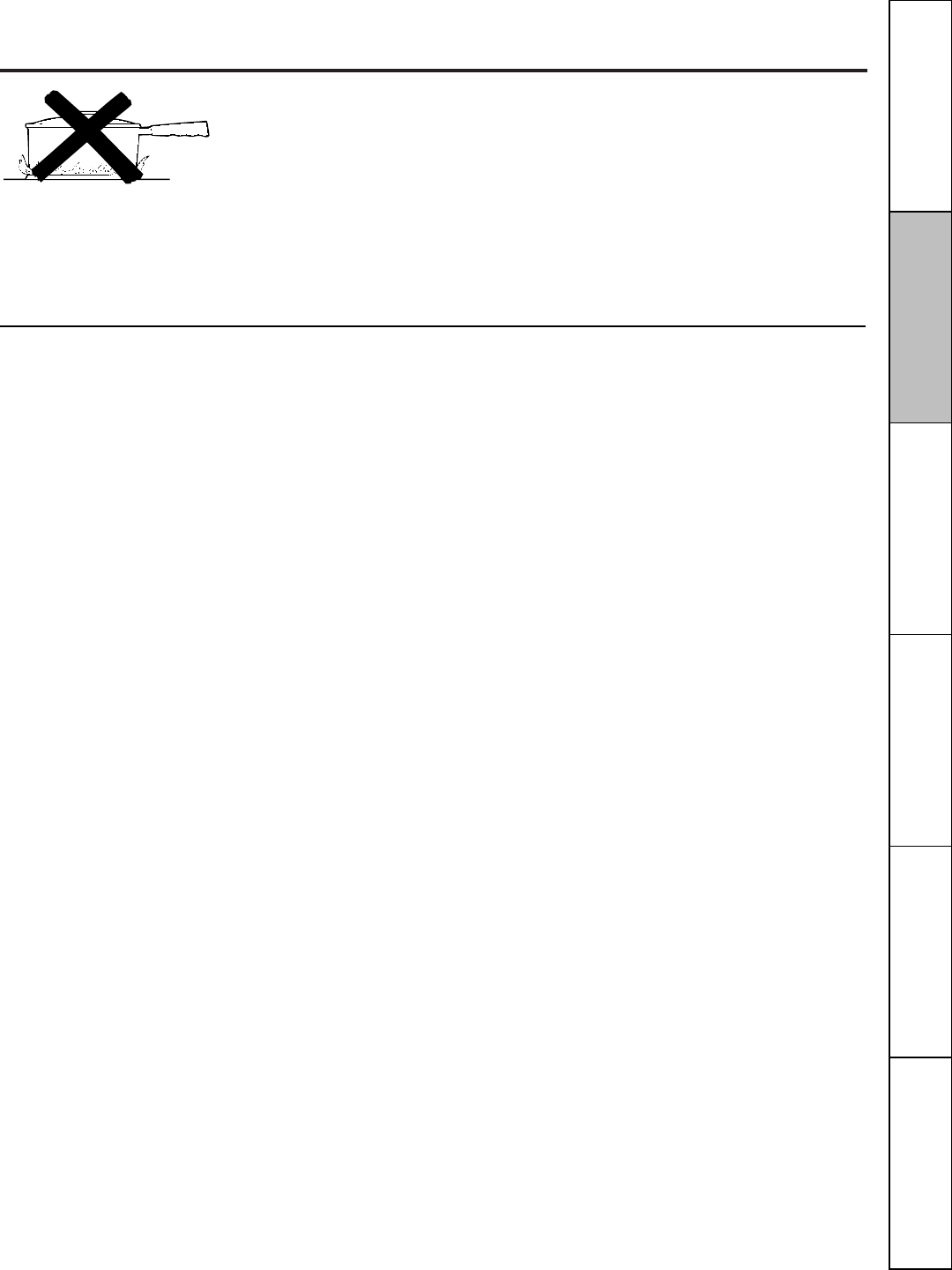
9
ge.com
Safety Instructions Operating Instructions Care and Cleaning Installation Instructions Troubleshooting Tips Consumer Support
How to Select Flame Size
Watch the flame, not the knob, as you reduce
heat. The flame size on a gas burner should
match the cookware you are using.
For safe handling of cookware, never let the
flame extend up the sides of the cookware.
Any flame larger than the bottom of the
cookware is wasted and only serves to
heat the handle.
Top of Range Cookware
Aluminum: Medium-weight cookware is
recommended because it heats quickly
and evenly. Most foods brown evenly in
an aluminum skillet. Use saucepans with
tight-fitting lids when cooking with
minimum amounts of water.
Cast-iron: If heated slowly, most skillets
will give satisfactory results.
Enamelware: Under some conditions,
the enamel of some cookware may
melt. Follow cookware manufacturer’s
recommendations for cooking methods.
Glass: There are 2 types of glass
cookware—those for oven use only
and those for top-of-range cooking
(saucepans, coffee and teapots).
Glass conducts heat very slowly.
Heatproof Glass Ceramic: Can be used
for either surface or oven cooking. It
conducts heat very slowly and cools very
slowly. Check cookware manufacturer’s
directions to be sure it can be used on
gas ranges.
Stainless Steel: This metal alone has
poor heating properties and is usually
combined with copper, aluminum
or other metals for improved heat
distribution. Combination metal skillets
usually work satisfactorily if they are used
with medium heat as the manufacturer
recommends.
Never let the flame extend up the
sides of the cookware.



